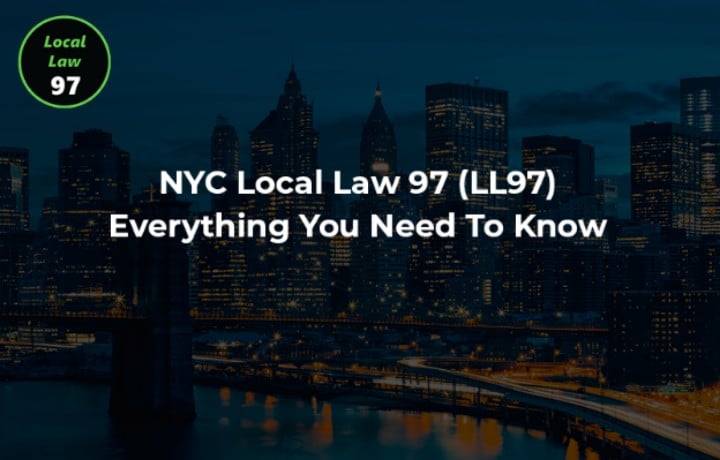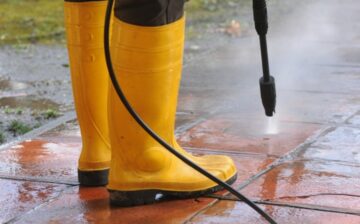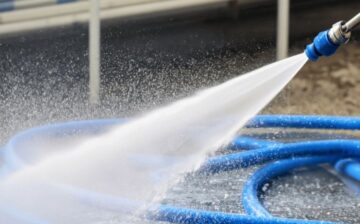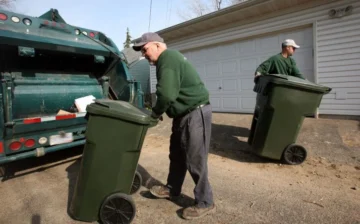Do you know that buildings in NYC contribute about two-thirds of the greenhouse emissions in the city?
Mayor de Blasio has promised to reduce these gases and turn the city carbon-free by 2050. Among the country’s most comprehensive strategies for lowering emissions is Local Law 97.
As a component of the Mayor’s New York City Green New Deal, Local Law 97 NYC was incorporated into the Climate Mobilization Act, which the City Council approved in April 2019. This article explains crucial details about NYC local law 97 to help building owners understand how it will impact them. So, let’s start.
Why Do You Need To Pre-Plan For Local Law 97 Compliance?
Implementing energy conservation solutions that benefit your multifamily buildings won’t happen the next day. Therefore, the best moment to make preparations is now.
NYC Local Law 97 (LL97) conformity starts in 2024. For the buildings you own, now is an excellent moment to set the framework for extensive energy-saving modifications or long-term energy-efficiency plans.
NYC Local Law 97 Explained
New York City passed Local Law 97 (LL97) to combat global warming, establishing specified emission caps for structures larger than 25,000 square feet. The law was passed to combat global warming by reducing the greenhouse emissions from citywide buildings.
Building owners must comprehend legal obligations and assure compliance to prevent penalties and charges. Property owners must comply with particular emissions restrictions dependent on the occupancy type of their buildings starting in 2024 when the regulation takes effect.
Building owners also have an annual reporting requirement to the city of their emissions data. Retrofits that increase energy efficiency and lower emissions are required for buildings that do not comply with the emission standards.
It is crucial to remember that the city will use inspections, fines, and other sanctions to enforce the legislation. Building proprietors must therefore take action to comprehend what the law requires and create a plan to adhere to the emissions restrictions.
This could entail measuring and reporting data on emissions to the city, as well as making investments in energy-efficient upgrades or renewable energy sources. Now that you know ‘what is local law 97,’ let’s look at why this law is coming into effect.
Why Is Local Law 97 Coming Into Effect?
New York and cities with high air pollution index now need to take serious steps to deal with climatic change. For instance, the European Union has decided to lower carbon emissions at a fast pace during the Paris Agreement.
This step will help the world combat climatic changes and keep the world temperature rise below 2°C. Local Law 97 is fully in effect for fast-paced carbon emission reduction in NYC to accomplish the city’s target of becoming carbon-free by 2050.
The law will incentivize building owners to use sustainable, energy-saving practices and clean energy in their structures by imposing limits on building emissions.
Buildings Covered Under NYC Local Law 97
The New York local law 97 emission restrictions cover the following:
- Buildings with a floor area greater than 25,000 gross sq. ft
- Two or more structures totaling more than 50,000 gross sq. ft on the same tax lot
- Two or more condo association-owned buildings with a combined gross square footage of more than 50,000 that are overseen by the same board of managers.
Local law 97 in New York doesn’t apply to certain building structures, such as those for production, research, lab development, and vehicle upkeep and storage. Federal, state, or local government buildings are exempted from this law.
Nevertheless, comparable rules and specifications might still apply to the structures these corporations hold.
Exemptions Under Local Law 97 New York City
Although NYC local law 97 intends to be all-inclusive, it comes with certain exemptions. The exemptions under LL97 are as follows:
- A designated place of worship for the religion
- Industrial buildings were primarily used to produce steam or electricity.
- Building structures are recognized as a segment of the federal housing program.
- Multi-Family homes with three stories or less and no central heating, air conditioning, or hot water system.
- Buildings that belong to the city (apart from senior institutions in the City University of New York system)
- Healthcare institutions and non-profit hospitals
- Building structure generating stipulated rent every month or quarter.
- Building properties owned and held by the Housing Development Fund Corporation or the NYC Housing Authority.
The majority of exempt building structures must be dedicated to reducing carbon emissions.
Local Law 97 For Building Owners: How To Comply
Accomplishing a building’s carbon limit is no hassle for building owners if they actively reduce carbon. They can do so by leveraging low-carbon fuels and enhancing energy efficiency. They may also put up solar or battery backup systems on-site to assist in satisfying the requirements of the law.
They may additionally utilize credits from initiatives that reduce greenhouse gas emissions (GHG offsets) or qualifying renewable energy generation (RECs). Criteria for some inexpensive and income-restricted housing types have been postponed or changed.
And because they fall under the description of “Article 321 buildings” in the law, some covered structures, such as places of worship and structures with over 35 percent rent-regulated units, are subject to a prescriptive checklist of inexpensive energy modifications by 2024 rather than having to comply with the law’s carbon limits.
Local Law 97 Compliance: Requirements For Building Owners
The following are the main requirements for property owners to adhere to LL97:
| Emissions Restrictions |
|
| Retrofits |
|
| Reporting |
|
Property owners must create a compliance strategy that assures timely observance of the emissions limitations and considers the unique needs of LL97.
Investing in emissions tracking and reporting solutions, renewable energy solutions, and energy-efficient retrofits is crucial for building owners when they need to be in compliance with the regulations.
Local Law 97 Non-Compliance: Penalties & Fines
If building owners fail to comply with local law 97 requirements, they may be subject to one of three types of fines:
- The maximum annual fine for building owners who go over the allowed limit is equal to $268 multiplied by the discrepancy between the allowed limit and the actual building emissions.
- There is a $500,000 penalty for building owners who make fraudulent claims on their reports.
- However, what if any building owner fails to submit a report? In that case, they will be penalized with $0.50 per square foot of the building per month.
Besides fines and penalties, noncompliant structures may suffer reputational harm and a decline in property value. Property owners should therefore take the appropriate actions to comply with LL97 and lower their greenhouse gas emissions.
How Can Energy Efficiency Advisory Services Help You With LL97 Compliance?
Top-tier energy efficiency advisory service providers in New York with expertise in local law compliance can assist building owners in various ways to comply with New York LL97 in many ways, such as:
- The expert counsels will ensure real-time tracking of emissions, which can assist building owners in adhering to LL97 emission limitations.
- The best energy efficiency and carbon emission reduction advisor may additionally offer performance benchmarking against comparable structures, enabling building owners to assess their own energy efficiency compared to that of their contemporaries.
Conclusion
Buildings must submit an energy efficiency report in 2025 indicating and highlighting their carbon emissions in 2024. So, it’s best to get started with strategies and ways to reduce carbon emissions and local law compliance from today.
Implementing energy efficiency strategies and tactics in effect and leveraging the power of energy-conserving tools and technologies brings long-term benefits for not only your buildings but your business and tenants. This is where hiring the best energy efficiency advisory service provider comes to aid.
Their cost-effective and energy-saving strategies and initiatives will help you get a step closer to local law 97 compliance in no time. In addition to that, seeking services from such expert counsels brings extra benefits like low operating costs, enhanced tenant happiness, property value increase, and low carbon footprint to real estate owners in New York.
Frequently Asked Questions –
What does NYC Local Law 97 regulate?
Local law 97 New York City regulates greenhouse gas emissions within the entire city and intends to make NYC carbon-neutral and clean by the year 2050.
My building is affected by local law 97. What should I do now?
All structures affected by Local Law 97 must submit an annual Greenhouse Gas Emission Report by May 2025. This will indicate whether or how much the building exceeds the set limitations, depending on whether it conforms with standards. This report must be submitted every May after that.
For the majority of impacted buildings, this means taking proactive measures to quickly cut these carbon emissions and gain a greater understanding of your energy usage.
I failed to comply with the local law 97 requirements. What will happen next?
Buildings that go over the limit will be fined annually. This amounts to the $268 difference between the building’s permitted limit and actual carbon emissions.
We hope you found this blog post on NYC Local Law 97 (LL97): Everything You Need To Know useful. Be sure to check out our post on Understanding Local Law 87 in New York City for more great tips!
Have Experience in the Moving Industry? Want an Additional Income Stream? Work With All Around Moving!
Working with us at, All Around Moving Services Company, Inc., is profitable. Earn extra income while you put your experience and drive to good use. Click here to learn more.






